In preparation for my upcoming GDC talk “Get Journalists to Cover Your Game: Lessons from Online Dating, Praying and ‘No Man’s Sky‘“ I talked to plenty of high profile journalists to find out what makes them cover games.
One thing that kept coming up was that animated gifs – in pitch emails or spotted on twitter – often easily convince editors to check out a game.
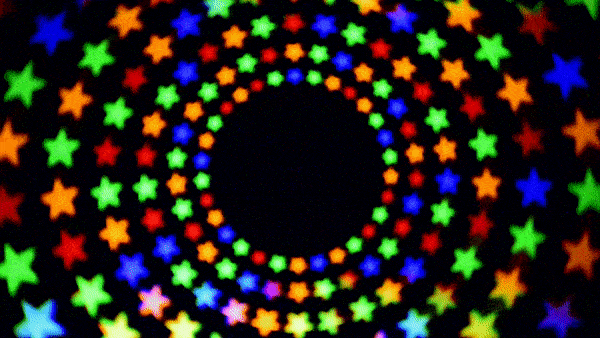
Also from professional experience of doing games PR for years I can’t think of a better tool to show off your game. Our current approach at ICO Partners when pitching games in emails to media and influencers is to have a snappy headline, two short sentences that explain why they should care about a certain game followed by a nice animated gif and links to the press page and a blog post / full press release. That’s about it. Sounds easy but actually boiling the essence of your game down in two sentences and a 5 second gif is quite a lot of work (but it’s work that pays off).
For this reason, I decided to put together a guide for creating easy and pretty gaming gifs, that should give you all the tools you need to let your game shine in a nice animated image.

I separated this article into 3 steps
1) Decide what you want to show in the gif
2) Get video material for the gif (we discuss three options here)
3) Compress the gif
Disclaimer
- Please note that there are probably more ways to make gifs then there are Final Fantasy games (even including spin offs). The following methods are my favourite ways to make animated gifs from the different ways I’ve tried, but if you have alternative suggestions please let me know in the comments or on Twitter.
- Working in an PR agency we usually don’t capture gameplay footage for the gifs ourselves. This is why this blog post focuses mostly on how you make gifs if you already have video material in the form of a trailer or a video and want to transform it into a short animated gif. This proved to be a good method to get, with some practice, nice gifs out there within a couple of minutes of work.
- We are still not sure how to pronounce gif correctly.

1) Decide what you want to show in the gif
First, think about what the highlight of your game is, or what you want to show. Maybe it’s a special gameplay feature, maybe you want to explain the concept of your game, maybe the atmosphere, or maybe you just want to show off some nice animations. Depending on that the size, resolution and length will vary greatly, and because gifs are so small in file size you really have to focus your attention on your most outstanding feature.
I usually try to think of gifs like little film trailers – you probably won’t have the time to explain all the details your game but your aim is to bring the mood and main selling point across in a way that should make people care and want to find out more.

2) Get video material for the gif
Depending on what you want to show in your gif there are different paths you can take on the recording front. I always decide first I want to a) show short looping gameplay snipped in the gif or b) have a gif that is sort of a mini trailer for the game (perfect for the game announcement or launch).
At this point don’t worry too much about file sizes or resolutions, we will compress the gif in the next step. Do however keep your gif length in mind. I usually make them 3 to 10 seconds long for Twitter and email usage. Although this sounds pretty short you can actually fit some good material in there.
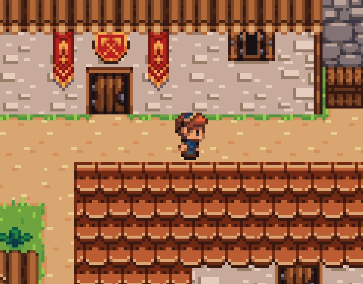
Option a) Record your gif footage in-game
As mentioned in the intro, working in a PR agency we usually don’t capture footage ourselves but get videos on trailers and transform them into gifs which proves to be a time-saving way with good results (more on that in Option C.). If you instead want to capture footage yourself that is a good option too. In this case I would recommend listening to people that know more about video capturing than me in one of the many online threads and tutorials about capturing footage and moving on to point 3 about gif compression. (Also if you have tips and tools on capturing please let me know Twitter).
Option b) Record a short gameplay snippet from a video
If I already have a video that I wish to record some gameplay footage from for a gif, I use free software called gifcam (download link). It opens a little frame on your PC screen and captures whatever appears within that frame.
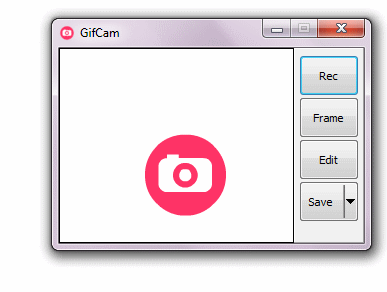
Once the software is open, simply have your game or a video of your game (often easier) running and capture the bit you want.
Usually my window capturing size is about as big as as a credit card (don’t make it much bigger, you will need to compress the gif anyway) and be sure you record with the maximum frame rate that GifCam allows. In terms of frames per second it’s always better to get a nice raw file and compress it later.

Usually it takes a few tries to get exactly the bit you wanted but the software also offers a simple editing engine to remove the things you recorded by accident, or if you want to get a gif that loops in a perfect cycle.
That’s it! Skip the next part and go to the section about gif compression
Option c) Transform a trailer into a gif trailer
This is my favourite way to makes gifs, as it’s usually really quick to do and brings great results! All you need beforehand is a trailer or a video of your game. First some tips on how to cut your video into gif length and then some tips how to transform the short video into an actual animated gif.
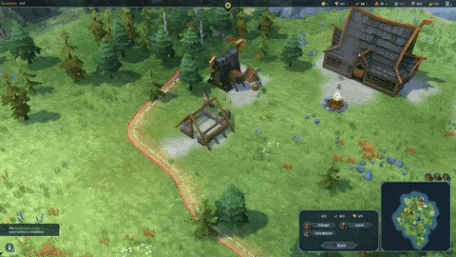
Option C step one: Cut your video into a small video in gif length
Load your trailer or gameplay video into a video editing programme. The options here are limitless, from pro software like Adobe After Effects, to free software like Movie Maker or iMovie – anything that can cut video works. I usually use Videopad Pro. It’s very straightforward and costs around $30. Next you cut together the nice little video that will end up es your gif but for now save it any common video format (mov. Mp4 and so on).
Some general tips when cutting small video in gif length:
- If you want to show variety you can show 2-3 different scenes and usually I aim to show each at least 1,5 seconds. Otherwise the gif feels messy.
- Often it makes sense to show different aspects of your game (gameplay vs cutscenes, different levels, different characters) to paint a broader picture of what your game is about.
- I usually try to pick something eye catching straight from the start, so the viewer sticks with the gif to the end.
- I would advise showing an end slate for a couple of seconds at the end of your gif. This is just a screen that usually shows your game title and maybe the platforms and / or release date (look at the Northgard gif above – I mean the last part with the Steam and game logos). This is vital information if your gif gets shared around online (otherwise how are people gonna find you?), and as this is a static image it’s relatively small in file size so won’t add much weight to the overall gif.
- I usually fade out the ending of the video to a black screen (the last 0.3 seconds or so) to let it loop smoothly. As in the Northgard gif above it’s quite hard to spot if you don’t know about it but it makes the cut to the beginning of the gif smoother.
- Again, focus on the essentials I would recommend not go beyond 3 to 10 seconds in length if you want to use your gif on Twitter.
- If your game plays much better than it looks it can help to include a good press quote in the gif if you already have one. Just don’t forget to check back with the editor first to ensure it’s okay to use the quote.
Cool, now that you have the raw video version of your gif footage, we want to transform it into a gif.
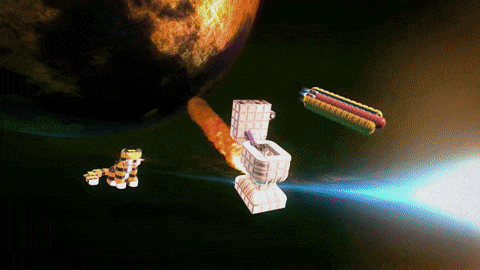
Option C step two: Transform your short video into an actual gif file
- Go to ezgif.com. After uploading your gif in the “video to gif options” there are a couple of important variables you can change next.
- Set the right length. Be sure to set the right start and end time for your gif. By default this option is always set from 0 to 5 seconds.
- Set the right dimension. Here you can already pick the dimensions of the gif. Usually I resize it later anyway but it doesn’t hurt to pick something that is close to your final output – for gifs for Twitter and emails I often use 480xAuto here.
- Set a right framerate. In most cases I aim for the 10 or 20 frame option but it really depends on the game. For a more static point and click adventure for example 10 frames will be fine, but for a game where you want to show off gorgeous animations I would rather go for the maximum of 25 frames per second so it looks super fluent, but save file size by reducing the image size and gif length. The best approach here is to just switch between the different options and see how many frames you need to make it look nice.

3) Compress the gif
Once you have your gif, the final big step is to compress it to fit your needs. Again, there are probably many ways to do this but my favourite quick and easy go-to solution is also on the website ezgif.com.
First, think about where you want to use it before you go to compress your gif.
- My most common use of gifs for PR purposes is for posting on Twitter, and also for putting straight into emails for media. For these approaches you should aim for a gif under 5MB. That’s the maximum size that Twitter will display animated gifs on mobile (15MB on desktop), and it’s not so big in emails that it will take ages to load – time in which you could lose your audience already.
- If you use your gif for a website or other platforms, you might want to have a bigger file size
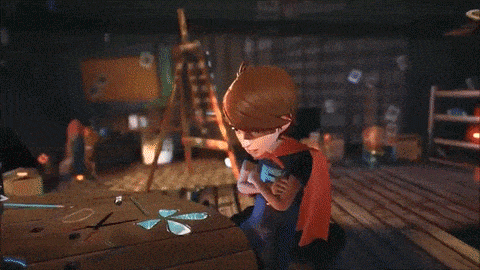
Use the gif optimizer on ezgif.com
- Upload you gif to ezgif.com in the “gif optimizer”.
- I ALWAYS use the default “Lossy Gif Level 30” option as in my opinion it cuts down the size file nicely while sacrificing very little of the image quality.
- If your gif looks nice at this point and is under 5MB (or a bigger file size you prefer if don’t need it for Twitter including mobile or emails) you are DONE!

- If the gif file size is not right just yet don’t worry. It usually takes me a few tries of hitting the sweet spot between quality and the right file size. What you can do now to bring the file size down is:
- Make your gif shorter
- Make the gif image size smaller (this saves quite a lot of file size, but I wouldn’t go under 350x for Twitter and emails)
- Use the medium and high levels of the “Lossy gif optimisation” option on ezgif.com. Depending on the game (for games with fewer little details and diverse colours for example) this can save you a lot of file size for little quality degradation. I always give this a try to see what it looks like.
- Use a lower framerate. Either by going back to the “video to gif” option on ezgif.com and saving your video with fewer frames, or by using the “give optimizer” and the “drop frames” option.
After all those steps and some playing around you should have a great looking gif!
Tl;dr gaming gif guidelines
- Decide what you want to show in your gif, focus on the essentials
- To use the gif for twitter (including mobile) and emails stay under 5MB
- A good length is often 3 to 10 seconds
- A good size is around 400 to 450 pixels in width (no smaller than 350 pixels minimum)
- To capture gameplay snippets from a video for your gif, gifcam is a good option
- To make a mini gif trailer out of an existing video simply cut it down in any video editor and use ezgif.com to transform it into a gif
- Compress your gifs with ezgif.com



Leave a Reply
Want to join the discussion?Feel free to contribute!